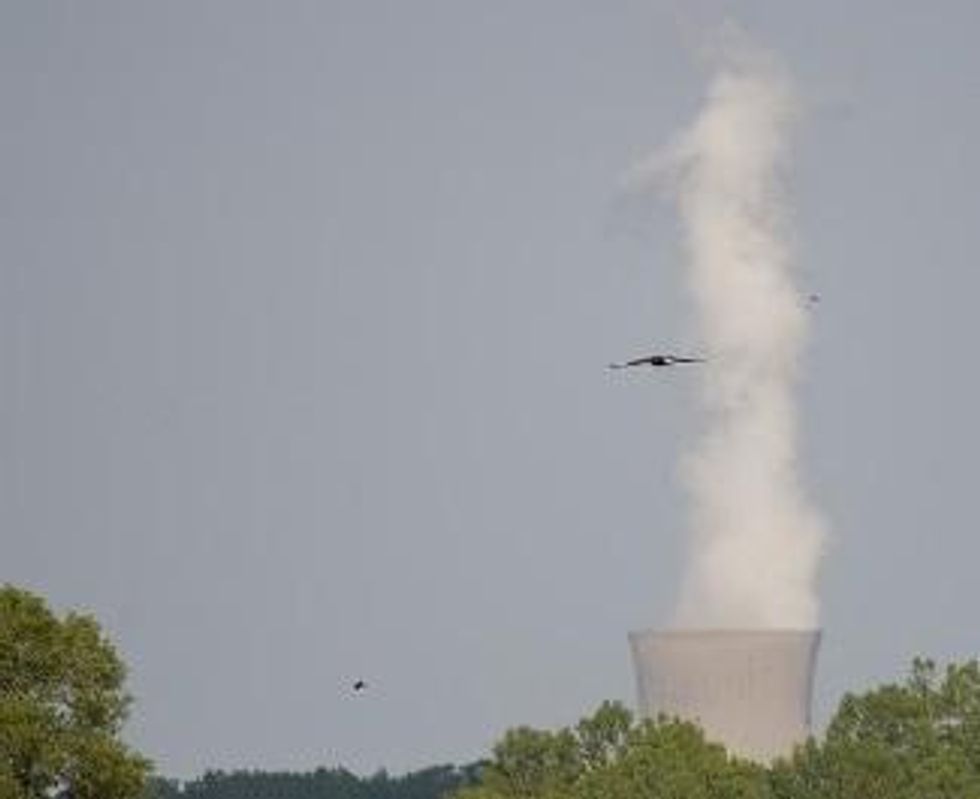Is the nuclear drought over?
When the Nuclear Regulatory Commission (NRC) recently approved two new nuclear reactors near Augusta, Georgia, the first such decision in 32 years, there was plenty of hoopla.
It marked a "clarion call to the world," declared Marvin S. Fertel, president of the Nuclear Energy Institute. "Nuclear energy is a critical part of President Obama's all-of-the-above energy strategy," declared Energy Secretary Chu, who traveled in February to the Vogtle site where Westinghouse plans to build two new reactors.
But it's too soon for nuclear boosters to pop their champagne corks. Japan's Fukushima disaster continues to unfold nearly a year after the deadly earthquake and tsunami unleashed what's shaping up to be the worst nuclear disaster ever. Meanwhile, a raft of worldwide reactor closures, cancellations, and postponements is still playing out. The global investment bank UBS estimates that some 30 reactors in several countries are at risk of closure, including at least two in highly pro-nuclear France.
And Siemens AG, one of the world's largest builders of nuclear power plants, has already dumped its nuclear business.
Recently, Standard and Poor's (S&P) credit rating agency announced that without blanket financing from consumers and taxpayers, the prospects of an American nuclear renaissance are "faint." It doesn't help that the nuclear price tag has nearly doubled in the past five years. Currently reactors are estimated to cost about $6 to $10 billion to build. The glut of cheap natural gas makes it even less attractive for us to nuke out.
How expensive is the bill that S&P thinks private lenders will shun?
Replacing the nation's existing fleet of 104 reactors, which are all slated for closure by 2056, could cost about $1.4 trillion. Oh, and add another $500 billion to boost the generating capacity by 50 percent to make a meaningful impact on reducing carbon emissions. (Nuclear power advocates are touting it as a means of slowing climate change.) We'd need to fire up at least one new reactor every month, or even more often, for the next several decades.
Dream on.
Meanwhile, Japan -- which has the world's third-largest nuclear reactor fleet -- has cancelled all new nuclear reactor projects. All but two of its 54 plants are shut down. Plus the risk of yet another highly destructive earthquake occurring even closer to the Fukushima reactors has increased, according to the European Geosciences Union.
This is particularly worrisome for Daiichi's structurally damaged spent fuel pool at Reactor No. 4, which sits 100 feet above ground, exposed to the elements. Drainage of water from this pool resulting from another quake could trigger a catastrophic radiological fire involving about eight times more radioactive cesium than was released at Chernobyl.
Ironically, the NRC's decision to license those two reactors has thrown a lifeline to Japan's flagging nuclear power industry (along with an $8.3-billion U.S. taxpayer loan guarantee). Toshiba Corp. owns 87 percent of Westinghouse, which is slated to build the new reactors. Since U.S.-based nuclear power vendors disappeared years ago, all of the proposed reactors in this country are to be made by Japanese firms -- Toshiba, Mitsubishi, and Hitachi -- or Areva, which is mostly owned by the French government. According to the Energy Department, "major equipment would not be manufactured by U.S. facilities."
For Southern Co., which would operate the Vogtle reactors, the NRC's approval is just the beginning of a financial and political gauntlet it must run through. Over the strenuous objections of consumers and businesses, energy customers will shoulder the costs of financing and constructing this $17-billion project, even if the reactors are abandoned before completion. If things don't turn out, U.S. taxpayers will also be on the hook for an $8.3-billion loan guarantee that the Energy Department has approved.
The Congressional Budget Office and the Government Accountability Office estimate that nuclear loan guarantees have a 50/50 chance of default.
Nearly four decades after the Three Mile Island accident, nuclear power remains expensive, dangerous, and too radioactive for Wall Street. The industry won't grow unless the U.S. government props it up and the public bears the risks.

